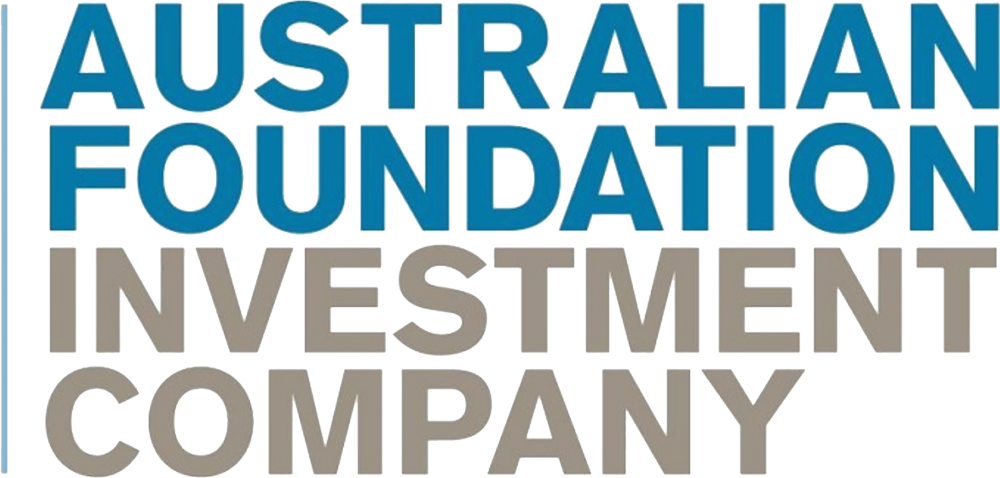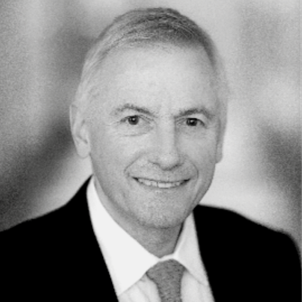
Australian Foundation Investment Company Limited
Overview
| LIC Name | Australian Foundation Investment Company Limited |
| ASX Ticker | AFI |
| Listing Year | 1928 (95 years operating) |
| Size (Market Cap) | $9.1B |
| Investment Focus | Australian Equities |
| Portfolio Bias | Large Cap |
| Benchmark | S&P/ASX 200 Accumulation Index |
| Management Structure | Internally Managed |
| Investment Manager | N/A (Internally Managed) |
| Management Fee Structure | N/A (Internally Managed) |
| Performance Fee Structure | No Performance Fee |
| Cost Indicator (FY23) | 0.14% |
| Objective | By investing in a diversified portfolio of primarily ASX-listed large cap Australian Equities, AFIC aims to provide shareholders with attractive investment returns through access to a growing stream of fully franked dividends and enhancement of capital invested over the medium to long term (5+ years). |
| Objective | |
| By investing in a diversified portfolio of primarily ASX-listed large cap Australian Equities, AFIC aims to provide shareholders with attractive investment returns through access to a growing stream of fully franked dividends and enhancement of capital invested over the medium to long term (5+ years). | |
| Recent Annual Reports | 2023, 2022, 2021, 2020, 2019, 2018, 2017, 2016, 2015, 2014 |
Key Personnel
Board Members
-

Craig Drummond
Chairman and Independent Non-Executive Director
Joined AFI: 2021
Shares Owned: 64K
Share Value: $453K
*Share data from 2023 Annual Report
Non-Executive Chairman of the Company's subsidiary, Australian Investment Company Services Limited (AICS). Chairman of the Investment and Nomination Committees. Member of the Remuneration Committee.<br><br>Mr Drummond was appointed to the Board ...
-

Mark Freeman
Managing Director
Joined AFI: 2007
Shares Owned: 184K
Share Value: $1.3M
*Share data from 2023 Annual Report
Member of the Investment Committee. Managing Director of the Company's subsidiary, Australian Investment Company Services Limited (AICS). <br><br>Mr Freeman became Chief Executive Officer and Managing Director in January 2018 having been Chief ...
-

Graeme R Liebelt
Independent Non-Executive Director
Joined AFI: 2012
Shares Owned: 528K
Share Value: $3.8M
*Share data from 2023 Annual Report
Chairman of the Remuneration Committee. <br><br>Mr Liebelt was appointed to the Board in June 2012. He is Chairman of Amcor Limited. He is a Fellow of the Australian Academy of Technological Sciences and Engineering and a Fellow of the Australian ...
-

David A Peever
Independent Non-Executive Director
Joined AFI: 2013
Shares Owned: 35K
Share Value: $247K
*Share data from 2023 Annual Report
Member of the Audit and Investment Committees. <br><br>Mr Peever was appointed to the Board in November 2013. He was Managing Director of Rio Tinto Australia from 2009 to 2014. He is Chairman of Brisbane Airport Group Pty Ltd. He chaired the ...
-

Rebecca Dee-Bradley
Independent Non-Executive Director
Joined AFI: 2019
Shares Owned: 15K
Share Value: $108K
*Share data from 2023 Annual Report
Member of the Investment and Nomination Committees. <br><br>Ms Dee-Bradbury was appointed to the Board in May 2019. Ms Dee-Bradbury was previously Chief Executive Officer/President of Developed Markets (Asia Pacific and ANZ) for Mondelez from ...
-

Julie Fahey
Independent Non-Executive Director
Joined AFI: 2021
Shares Owned: 1,260
Share Value: $9K
*Share data from 2023 Annual Report
Chair of the Audit Committee. <br><br>Ms Fahey was appointed to the Board in April 2021. She has over 30 years of experience in technology, including in major organisations such as Western Mining, Exxon, Roy Morgan, General Motors and SAP, ...
Investment Management
-

Mark Freeman
Managing Director
Joined AFI: 2007
Shares Owned: 184K
Share Value: $1.3M
*Share data from 2023 Annual Report
Member of the Investment Committee. Managing Director of the Company's subsidiary, Australian Investment Company Services Limited (AICS). <br><br>Mr Freeman became Chief Executive Officer and Managing Director in January 2018 having been Chief ...
-

David Grace
Portfolio Manager
Joined AFI: 2018
David commenced with the group in 2018 as a Portfolio Manager. David has 15 years portfolio management experience having co-founded Concise Asset Management in 2007, which was a specialised midcap Australian equities manager. <br><br>David holds ...
Shareholders & Portfolio Size
Number of Shareholders
Portfolio Size
Portfolio Holdings
Top 20 Holdings at end of FY 2023
Performance
Historical Performance
| Updated: February 2024 | 1yr | 3yrs | 5yrs | 10yrs |
|---|---|---|---|---|
| With Dividends Reinvested - Net | 1.5% | 4.3% | 7.8% | 5.8% |
| With Dividends Reinvested - Gross | 3.0% | 5.7% | 9.4% | 7.5% |
Chart of Historical Performance
Dividends
Dividend History
| Payment Date | Dividend Type | Dividend Amount | Franking Level |
|---|---|---|---|
| 26 Feb, 2024 | Interim | $0.115 | 100% |
| 01 Sep, 2023 | Final | $0.14 | 100% |
| 24 Feb, 2023 | Interim | $0.11 | 100% |
| 30 Aug, 2022 | Final | $0.14 | 100% |
| 25 Feb, 2022 | Interim | $0.10 | 100% |
| 31 Aug, 2021 | Final | $0.14 | 100% |
| 23 Feb, 2021 | Interim | $0.10 | 100% |
| 01 Sep, 2020 | Final | $0.14 | 100% |
| 24 Feb, 2020 | Interim | $0.10 | 100% |
| 29 Aug, 2019 | Final | $0.14 | 100% |
Chart of Dividend History
Corresponding Dividend Yields
Dividend Comparison
Costs
Cost Indicator (%)
Actual Costs
Share Price vs NTA
Some Common Questions about AFI
The Australian Foundation Investment Company (known as ‘AFIC’ for short) is an Australian Listed Investment Company (LIC) listed on the Australian Stock Exchange (ticker code: AFI). It’s the largest LIC in Australia, with an investment portfolio size of over 8 billion and over 165 thousand shareholders.
AFIC’s principal activity is the investment of funds on behalf of its shareholders, with the objective of delivering a consistent and growing stream of income (via fully franked dividends), plus capital growth on the principal. It achieves this by itself investing shareholder funds in a diversified portfolio of ASX listed operating companies (such as BHP & CBA), and has recently built up small positions in international equities (total size less than 2% of total investment portfolio).
The Australian Foundation Investment Company is one of the most reputable Listed Investment Companies in Australia, has been operating for nearly 100 years, and is a popular investment choice for retail investors.
The Australian Foundation Investment Company (AFIC) is one of the oldest running Listed Investment Companies in Australia. It started managing shareholder funds in 1928 and now has over 165,000 individual shareholders. AFICs shareholder base has been steadily growing, as can be seen in the ‘Number of Shareholders’ graph near the top of this page.
AFIC is also the largest Listed Investment Company on the ASX in terms of investment portfolio size, with an investment portfolio of over $8 Billion. The second largest LIC is Argo Investments (ASX ticker ARG), with an investment portfolio of over $6 Billion.
The Australian Foundation Investment Company invests directly in equities (which are growth/risk assets), so it itself should also be thought of as a growth/risk asset, in terms of overall asset allocation for an individual investor. One benefit of the LIC structure, however, is that the company can retain profits and smoothen out income over time, thereby making it feel more like an income vehicle for the investor. The income isn't guaranteed, however, and a market shock could result in the company directors deciding to pause or cut future dividend payments.
With that disclaimer been made clear, and the assumption that the investor understands that AFIC is a risk asset, some important metrics an investor can ask themselves when assessing AFIC as an investment choice includes:
- Long term performance: Has AFIC delivered after-fee performance at or above its comparison benchmark (the ASX200 accumulation index) over the long term (5+ years)?
- Dividend reliability: Does the Australian Foundation Investment Company have a long term track record of maintaining or growing its dividend?
- Underlying holdings: What does AFIC itself invest in? LICs on the ASX invest in a wide array of assets, including large or micro cap equities, infrastructure, property, fixed income, and more. The investor should look inside the underlying holdings (which can be found in either the monthly updates, or if not there, the most recent annual report), and be comfortable with the investments the LIC would be making on their behalf.
- Fees: How 'expensive' is the fund for the investor? The common ratio quoted for this is the 'Management Expense Ratio,' which divides the total costs of the fund by its net tangible assets. For LICs on the ASX, this can range between the very low of around 0.15%, up to a high of 3%. 0.15% would mean $1.5 of fees per year for every $1,000 of funds the investor has invested (whereas 3% would mean $30). AFIC has one of the lowest MERs of all the LICs, at 0.16% in the most recent financial year.
A Listed Investment Company (LIC) is one type of investment fund structure (i.e. shareholder funds pooled together and invested together, either actively by a manager, or passively). Other types of investment funds include Exchange Traded Funds (ETFs) (which can be both actively managed or passive), Listed Investment Trusts, or Managed Funds.
The different structures have their own positives and negatives, which are dependent on the goals of the investor and their own individual investment structure.
Some of the benefits of the LIC structure (the structure of AFI) include:
- It's a closed-end investment vehicle: Meaning the manager has a fixed pool of capital to invest with a long-term mindset, and doesn't have the risk of fast redemptions by investors in a time of market panic.
- They can smoothen out income to the investors: Which can be beneficial for both tax efficiency and emotional mindset, due to being able to retain profits over time (as compared to the trust structure, which must distribute income and crystallized capital gains to the investor in that financial year).
- The income will most likely be in the form of fully franked dividends: Which is an attractive form for Australian retirees due to the franking system in Australia. Since LICs are companies themselves and pay tax in Australia on profits, they receive franking credits paid on the tax they pay, in addition to the franking credits they receive from their investment portfolio. Well-managed LICs ensure their franking credit reserves are sufficient to pay future fully franked dividends (see 'franking reserves' chart above).
